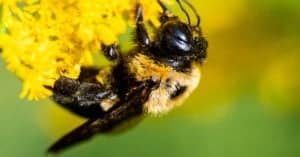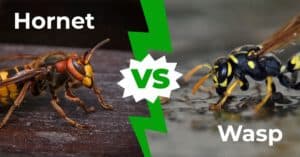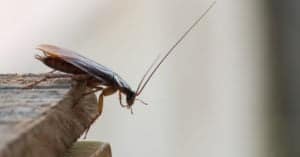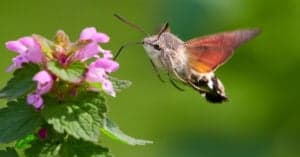10 Red Beetles and Bugs You Should Know!
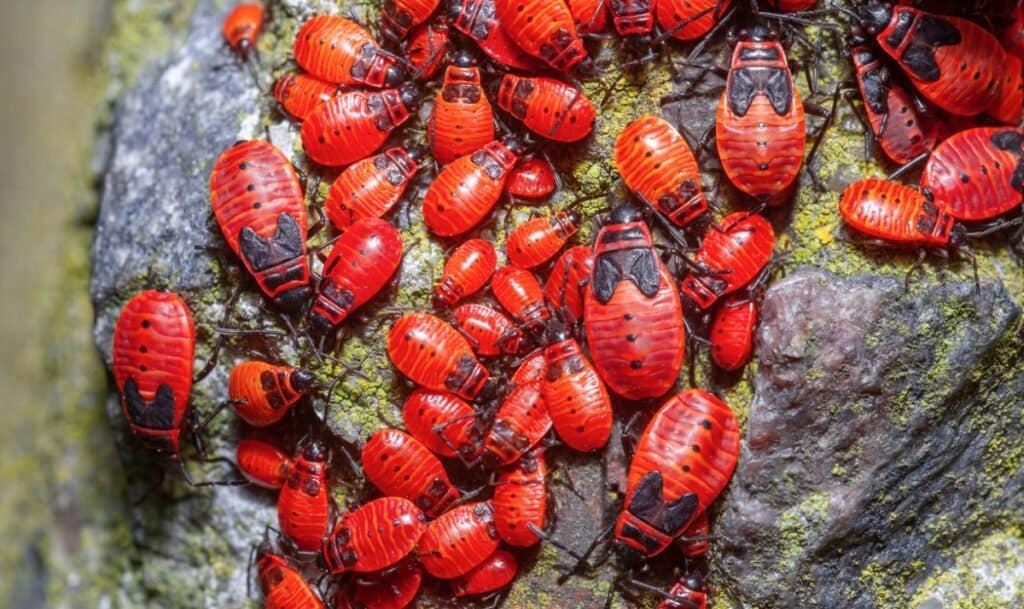
iStock.com/dmf87
Are you an insect enthusiast? Keep reading for a list of ten red beetles and bugs you should know more about. Whether they terrify you or amaze you, these red-colored beetles and bugs are sure to get your attention! We’ll start with five red beetles and then move on across the broader insect space. Let’s get started!
10. The Scarlet Lily Beetle
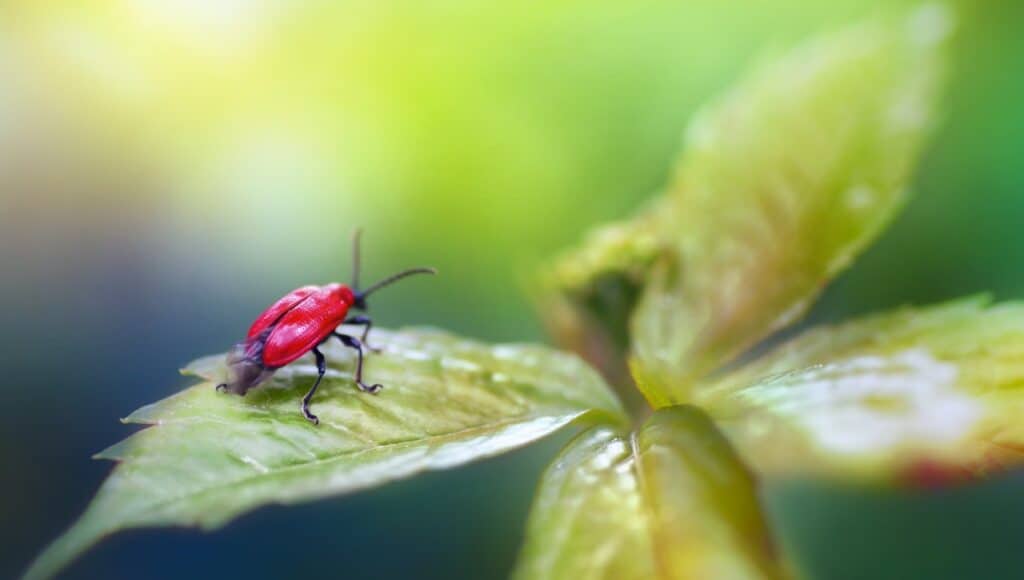
iStock.com/Larysa Pashkevich
The scarlet lily beetle, or Lilioceris lilii, is commonly referred to as lily leaf beetle or LLB. This is an invasive bug of Eurasian origin. Lily Leaf beetles feed on lily leaves, stems, buds, and flowers. This bug arrived in North America during WWII, via plant imports from Europe. LLB extended to New England in the 1990s and has subsequently moved west.
The scarlet lily beetle can severely destroy native and farmed real lilies as well as fritillaries. LLB can also harm the lily of the valley and solomon’s seal. LLB does not harm daylilies, canna lilies, or calla lilies.
Adult scarlet lily beetles emerge in early spring to forage, mate, and lay eggs. Lilly leaf beetles can disseminate over large areas to find host plants. Females eventually lay 250-450 eggs.
9. Red-Headed Cardinal Beetle
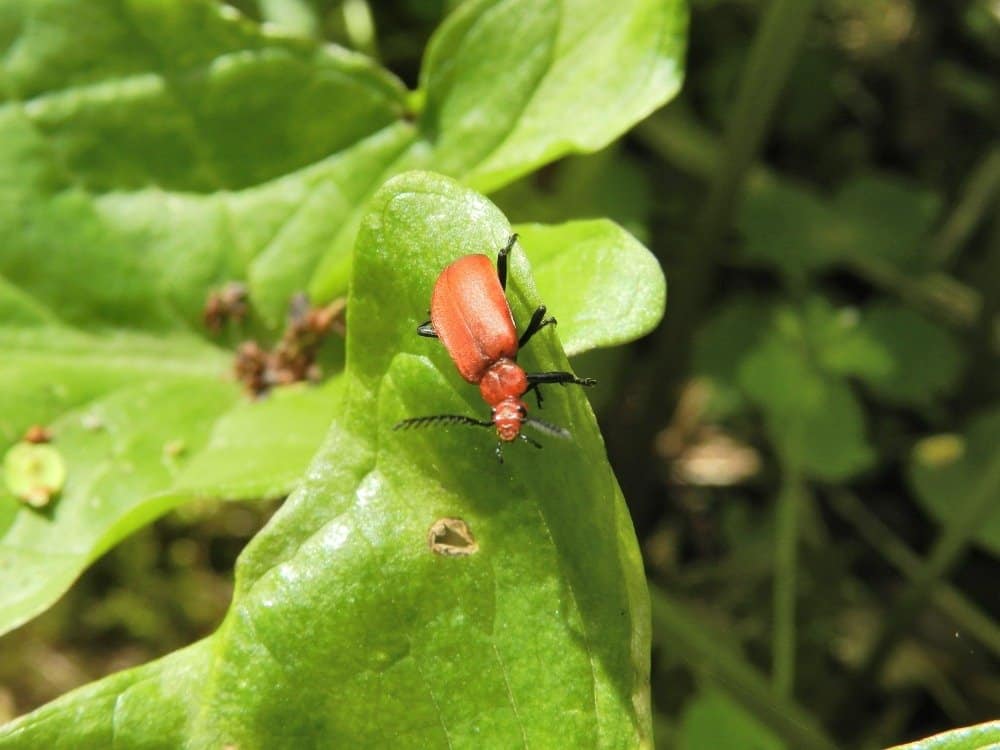
Millie Bond – Copyright A-Z Animals
Red-headed cardinal beetles, or Pyrochroa serraticornis, resemble lily beetles but have a more rounded body and dimpled wing cases. The red-headed cardinal beetle has black legs and long, toothed antennae. The lily beetle arrived in the UK on imported flowers in the 1900s.
The red-headed cardinal beetle inhabits woodlands, hedgerows, parks, and gardens. During the summer, the adults can be seen basking on flowers or tree trunks. They are predators that feed on insects that fly around the flowers they inhabit. The flattened larvae can live under loose bark and feed on other insects’ larvae.
8. Common Red Soldier Beetle
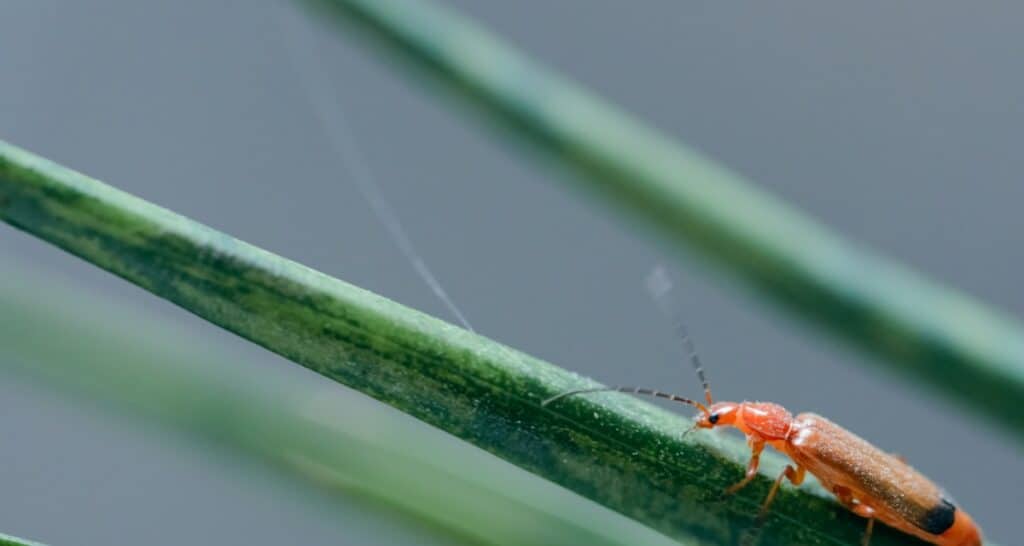
iStock.com/Vlajko611
The common red soldier beetle, or Rhagonycha fulva, is a summer-loving beetle attracted to open-structured flowers like daisies, cow parsley, and hogweed. It inhabits grasslands, hedgerows, woodlands, parks, and gardens. Adults devour aphids, pollen, and nectar. The larvae feed on ground-dwelling invertebrates like slugs and snails. A couple of adults spends much of their short summer lives mating.
The adults consume aphids, and the larvae eat other pests. The common red soldier beetle has a long antenna and a thin body. It’s orangey-red with black markings on the wing casings.
7. Red Flour Beetle
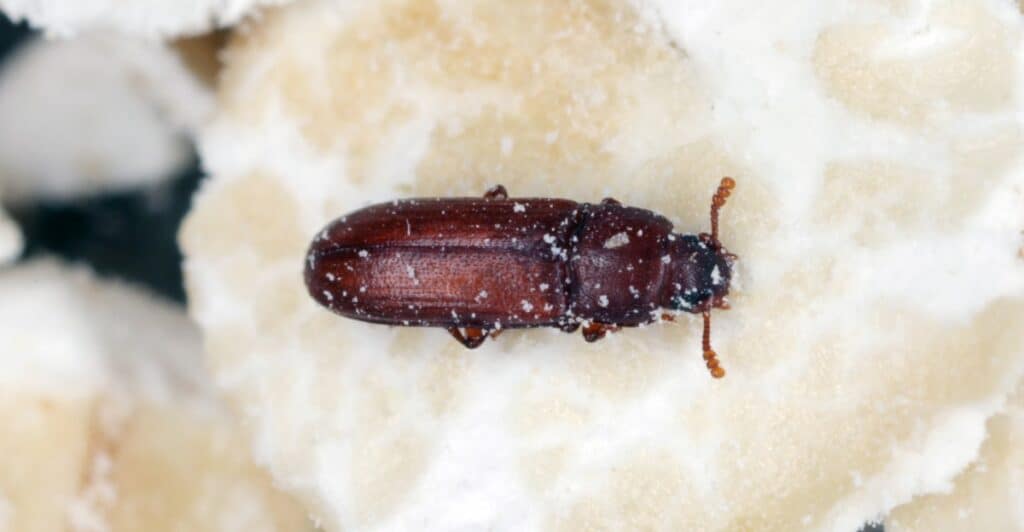
iStock.com/Tomasz Klejdysz
The red flour beetle is Indo-Australian in origin and lives in temperate climates. It is found in the southern states of the USA. The red flour beetle is known to infest grain or dry-stored food goods, notably cereal products such as flour, cake mix, cornmeal, crackers, and dry pet food. Infested foods contain adults and tiny off-white larvae. Adult beetles can be found within cupboards or anywhere in the house away from contaminated material. Adolescents live for three years or more, despite being little (1/8 inch long).
These beetles are frequently confused with the “confused” flour beetle because of their similar look, biochemistry, and behavior. The confused flour beetle was named for its ambiguous identity. The red flour beetle has curved sides, while the confused flour beetle has a straight thorax. Both species have a global distribution. Both bugs also consume pantry items.
6. Fire-Colored Beetle
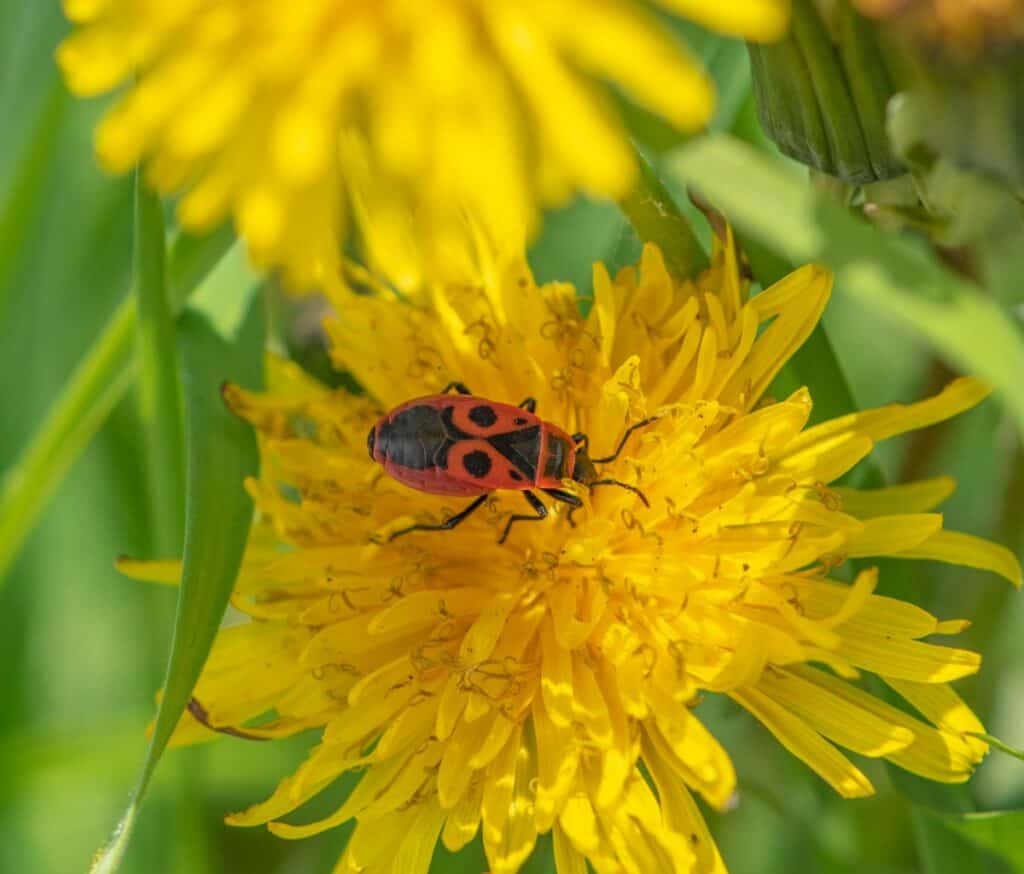
iStock.com/Mickis-Fotowelt
The fire-colored beetle, or Pedilus lugubris, has bright red wings and head make it appear dangerous, yet it is not. Large round black eyes flank the head, and its antennas are crimson. Despite its appearance, the fire-colored beetle poses little threat to humans. It doesn’t sting or spray caustic chemicals or bite. Their larvae are known to hide behind rocks and in woodpiles. Adults can get indoors after hitching a ride on firewood.
5. Firebug

iStock.com/dmf87
The firebug, or Pyrrhocoris apterus, is a common insect of the Pyrrhocoridae family. Its vivid red and black colors may be confused with the unrelated Corizus hyoscyami, or cinnamon bug.
The firebug is a major cotton pest in North America and India and is commonly referred to as “Cotton Stainer” because it harms cotton plants by sucking the sap and feces, coloring the cotton bolls in the process.
Their diet comprises lime and mallow seeds. They are commonly found in clusters towards the sunny side of lime tree trunks. Oval and crimson in color, this bug is 8-18 mm long (0.3 to 0.7 inches).
4. Red Velvet Ant
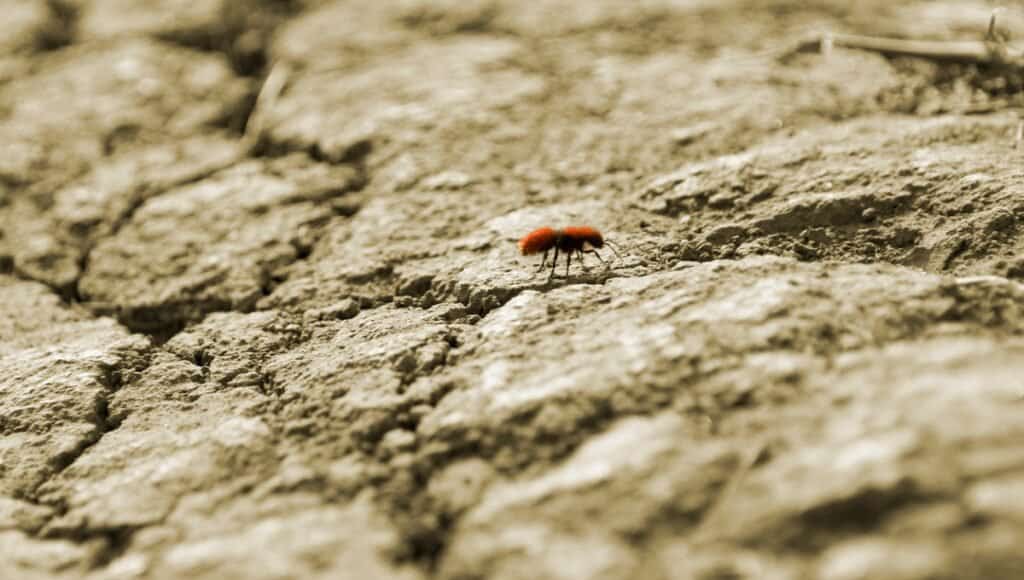
iStock.com/PJAlexander
The red velvet ant, or Dasymutilla occidentalis (Linnaeus), is actually a wasp, not an ant. The females lack wings and are covered with hair, like ants, whereas males have wings and can fly. There are numerous orange-red hair patches on their thorax and belly. In the summer, adults are the most common. The Red velvet ant is roughly three-quarters of an inch long.
Female velvet ants have a powerful sting, earning them the moniker “cow-killer,” despite the fact that their sting is insufficient to kill a cow. The “cow-killer” moniker comes from the fact that the sting of female velvet ants is particularly potent. Male red velvet ants have wings but no stinger.
3. Fire Ant
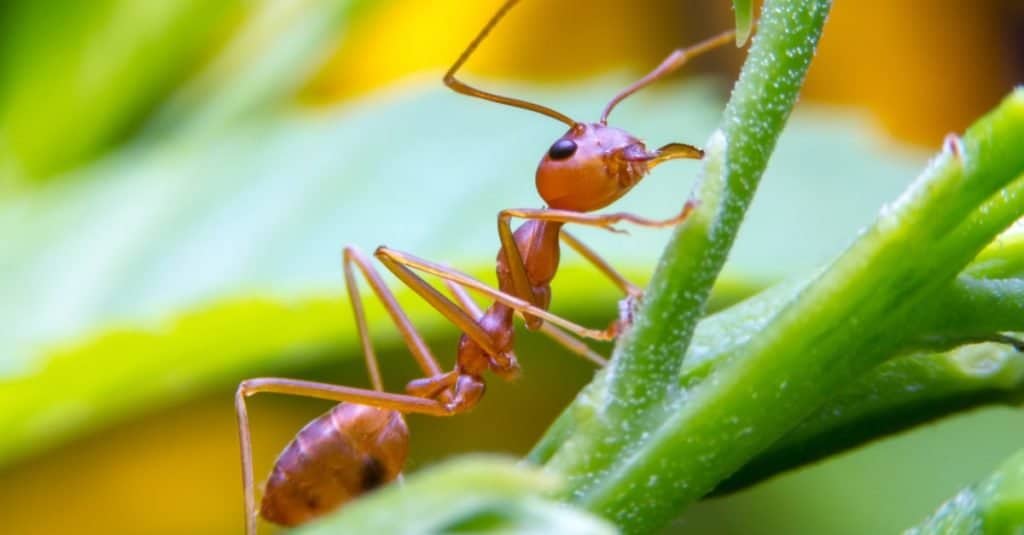
wnarong/Shutterstock.com
The red fire ant, or Solenopsis saevissima, was mistakenly brought from South America to North America. The red or yellowish ants are 1-5 mm (up to roughly a quarter inch) long and have a painful sting. These “laborers” are known to destroy grain and harm chickens and are notorious for their aggression when threatened by neighboring ant colonies, young fire ants.
When provoked, fire ants become aggressive and sting repeatedly. When stung, people may develop irritation and a white, fluid-filled pustule. Sensitive persons may experience swelling, chest pain, trouble breathing, nausea, and sweating. If this happens, seek immediate medical attention.
2. Red Banded Leafhopper
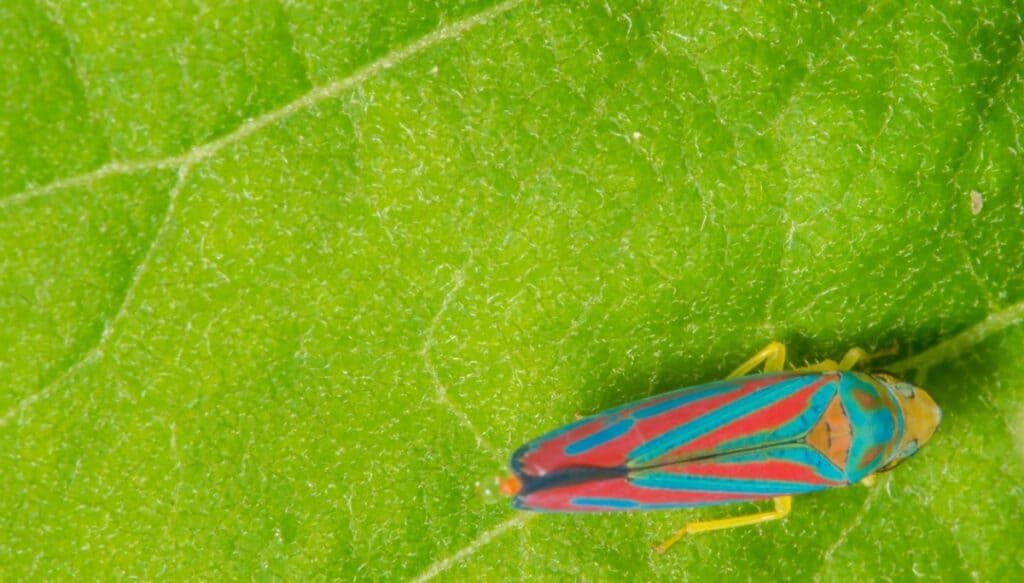
iStock.com/BobGrif
The red-banded leafhopper, or Graphocephala coccinea, is also referred to as the candy-striped leafhopper. It gets these names from the brilliant red and blue stripes on its wings and thorax. It has yellow on the head, legs, and underside. Leafhoppers are a three-eighths inch long. They live in woods and meadows and feed on leaf and stem sap.
Red-banded leafhoppers graze on ornamental plants including Scotch broom and crape myrtle. As this leafhopper pierces and suckers plant sap, it injects saliva. It can infect oak, elm, sycamore, and other trees with Pierce’s Disease. Pierce’s Disease is a fatal grapevine infection. Bacteria Xylella fastidiosa causes it and leafhoppers that feed on xylem bacteria spread it.
1. Black-and-Red-Bug (Lygaeus equestris)
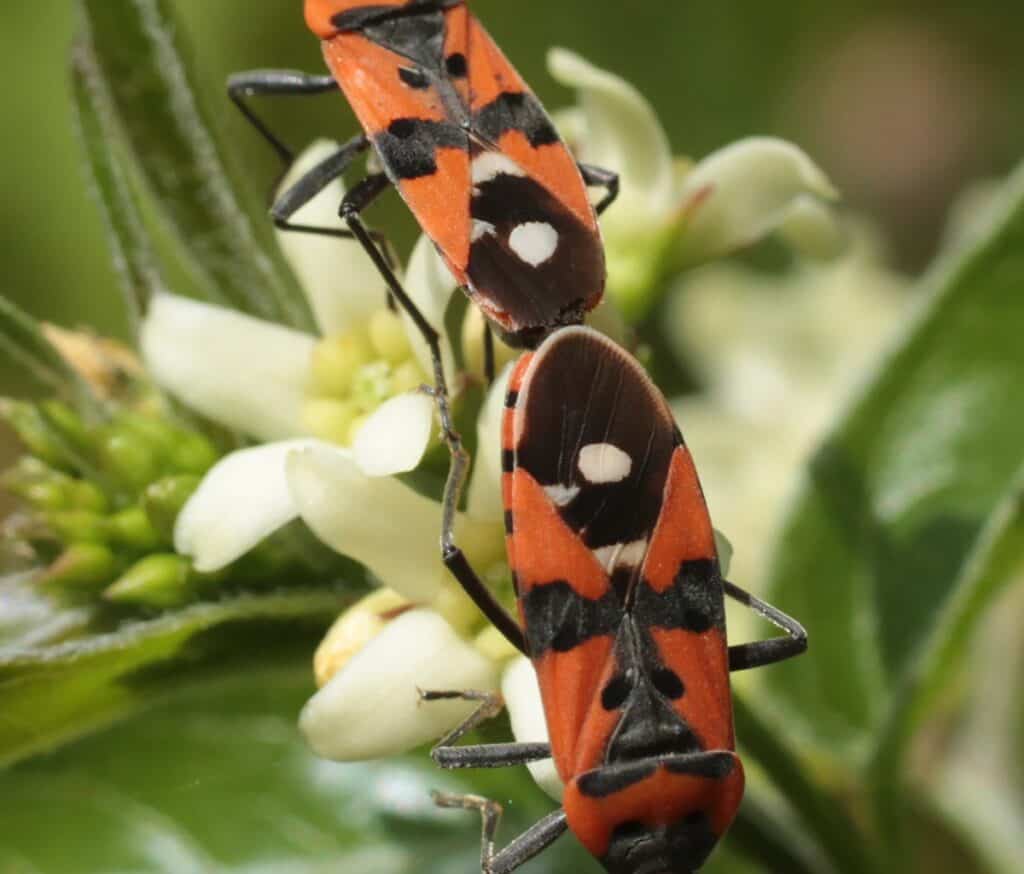
iStock.com/DE1967
In the Lygaeidae family, Lygaeus equestris is a ground bug with the common name Black-and-Red-bug. These bugs are ½ inch in length. Their wings are ta vibrant red and their legs are long. The red-black pattern deters insects and protects them. Warm weather is crucial for L. equestris because it is a sun-loving insect.
The bug has been recorded to feed on a range of plants. Many of these are poisonous. By accumulating the toxic elements of their feeding plants, they are distasteful to potential predators.
More from A-Z Animals

iStock.com/dmf87
Are you an insect enthusiast? Keep reading for a list of ten red beetles and bugs you should know more about. Whether they terrify you or amaze you, these red-colored beetles and bugs are sure to get your attention! We’ll start with five red beetles and then move on across the broader insect space. Let’s get started!
10. The Scarlet Lily Beetle

iStock.com/Larysa Pashkevich
The scarlet lily beetle, or Lilioceris lilii, is commonly referred to as lily leaf beetle or LLB. This is an invasive bug of Eurasian origin. Lily Leaf beetles feed on lily leaves, stems, buds, and flowers. This bug arrived in North America during WWII, via plant imports from Europe. LLB extended to New England in the 1990s and has subsequently moved west.
The scarlet lily beetle can severely destroy native and farmed real lilies as well as fritillaries. LLB can also harm the lily of the valley and solomon’s seal. LLB does not harm daylilies, canna lilies, or calla lilies.
Adult scarlet lily beetles emerge in early spring to forage, mate, and lay eggs. Lilly leaf beetles can disseminate over large areas to find host plants. Females eventually lay 250-450 eggs.
9. Red-Headed Cardinal Beetle

Millie Bond – Copyright A-Z Animals
Red-headed cardinal beetles, or Pyrochroa serraticornis, resemble lily beetles but have a more rounded body and dimpled wing cases. The red-headed cardinal beetle has black legs and long, toothed antennae. The lily beetle arrived in the UK on imported flowers in the 1900s.
The red-headed cardinal beetle inhabits woodlands, hedgerows, parks, and gardens. During the summer, the adults can be seen basking on flowers or tree trunks. They are predators that feed on insects that fly around the flowers they inhabit. The flattened larvae can live under loose bark and feed on other insects’ larvae.
8. Common Red Soldier Beetle

iStock.com/Vlajko611
The common red soldier beetle, or Rhagonycha fulva, is a summer-loving beetle attracted to open-structured flowers like daisies, cow parsley, and hogweed. It inhabits grasslands, hedgerows, woodlands, parks, and gardens. Adults devour aphids, pollen, and nectar. The larvae feed on ground-dwelling invertebrates like slugs and snails. A couple of adults spends much of their short summer lives mating.
The adults consume aphids, and the larvae eat other pests. The common red soldier beetle has a long antenna and a thin body. It’s orangey-red with black markings on the wing casings.
7. Red Flour Beetle

iStock.com/Tomasz Klejdysz
The red flour beetle is Indo-Australian in origin and lives in temperate climates. It is found in the southern states of the USA. The red flour beetle is known to infest grain or dry-stored food goods, notably cereal products such as flour, cake mix, cornmeal, crackers, and dry pet food. Infested foods contain adults and tiny off-white larvae. Adult beetles can be found within cupboards or anywhere in the house away from contaminated material. Adolescents live for three years or more, despite being little (1/8 inch long).
These beetles are frequently confused with the “confused” flour beetle because of their similar look, biochemistry, and behavior. The confused flour beetle was named for its ambiguous identity. The red flour beetle has curved sides, while the confused flour beetle has a straight thorax. Both species have a global distribution. Both bugs also consume pantry items.
6. Fire-Colored Beetle

iStock.com/Mickis-Fotowelt
The fire-colored beetle, or Pedilus lugubris, has bright red wings and head make it appear dangerous, yet it is not. Large round black eyes flank the head, and its antennas are crimson. Despite its appearance, the fire-colored beetle poses little threat to humans. It doesn’t sting or spray caustic chemicals or bite. Their larvae are known to hide behind rocks and in woodpiles. Adults can get indoors after hitching a ride on firewood.
5. Firebug

iStock.com/dmf87
The firebug, or Pyrrhocoris apterus, is a common insect of the Pyrrhocoridae family. Its vivid red and black colors may be confused with the unrelated Corizus hyoscyami, or cinnamon bug.
The firebug is a major cotton pest in North America and India and is commonly referred to as “Cotton Stainer” because it harms cotton plants by sucking the sap and feces, coloring the cotton bolls in the process.
Their diet comprises lime and mallow seeds. They are commonly found in clusters towards the sunny side of lime tree trunks. Oval and crimson in color, this bug is 8-18 mm long (0.3 to 0.7 inches).
4. Red Velvet Ant

iStock.com/PJAlexander
The red velvet ant, or Dasymutilla occidentalis (Linnaeus), is actually a wasp, not an ant. The females lack wings and are covered with hair, like ants, whereas males have wings and can fly. There are numerous orange-red hair patches on their thorax and belly. In the summer, adults are the most common. The Red velvet ant is roughly three-quarters of an inch long.
Female velvet ants have a powerful sting, earning them the moniker “cow-killer,” despite the fact that their sting is insufficient to kill a cow. The “cow-killer” moniker comes from the fact that the sting of female velvet ants is particularly potent. Male red velvet ants have wings but no stinger.
3. Fire Ant

wnarong/Shutterstock.com
The red fire ant, or Solenopsis saevissima, was mistakenly brought from South America to North America. The red or yellowish ants are 1-5 mm (up to roughly a quarter inch) long and have a painful sting. These “laborers” are known to destroy grain and harm chickens and are notorious for their aggression when threatened by neighboring ant colonies, young fire ants.
When provoked, fire ants become aggressive and sting repeatedly. When stung, people may develop irritation and a white, fluid-filled pustule. Sensitive persons may experience swelling, chest pain, trouble breathing, nausea, and sweating. If this happens, seek immediate medical attention.
2. Red Banded Leafhopper

iStock.com/BobGrif
The red-banded leafhopper, or Graphocephala coccinea, is also referred to as the candy-striped leafhopper. It gets these names from the brilliant red and blue stripes on its wings and thorax. It has yellow on the head, legs, and underside. Leafhoppers are a three-eighths inch long. They live in woods and meadows and feed on leaf and stem sap.
Red-banded leafhoppers graze on ornamental plants including Scotch broom and crape myrtle. As this leafhopper pierces and suckers plant sap, it injects saliva. It can infect oak, elm, sycamore, and other trees with Pierce’s Disease. Pierce’s Disease is a fatal grapevine infection. Bacteria Xylella fastidiosa causes it and leafhoppers that feed on xylem bacteria spread it.
1. Black-and-Red-Bug (Lygaeus equestris)

iStock.com/DE1967
In the Lygaeidae family, Lygaeus equestris is a ground bug with the common name Black-and-Red-bug. These bugs are ½ inch in length. Their wings are ta vibrant red and their legs are long. The red-black pattern deters insects and protects them. Warm weather is crucial for L. equestris because it is a sun-loving insect.
The bug has been recorded to feed on a range of plants. Many of these are poisonous. By accumulating the toxic elements of their feeding plants, they are distasteful to potential predators.

